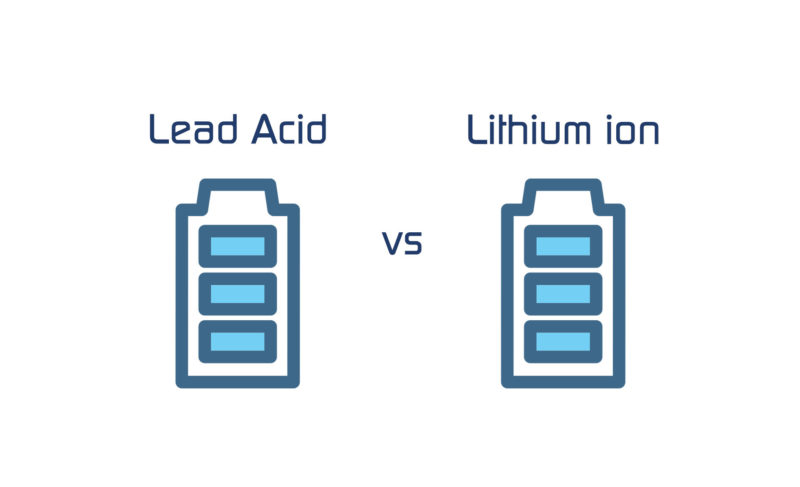Storage of batteries is evolving as one of the best popular features of solar energy systems. Different institutions provide various battery technology courses. The two primary chemistry-based batteries are lead-acid and lithium-ion batteries.
Before the discovery of lithium-ion batteries, various lead acid-based batteries were used frequently in numerous applications. However, the lithium-ion battery system has been initiated to oversee the lead acid batteries market as they have much efficiency. As a result, the lithium-ion batteries market is anticipated to display an increase of 17.23% in CAGR from 2022 to 2027.
Differences between the two batteries
There are many differences between lead-acid and lithium-ion batteries. Some of the main differences are as follows:
- Cost
The batteries of lead-acid are cheaper and easy to handle and install as compared to lithium-ion batteries. Lithium-ion-based batteries are two times more expensive than lead-acid batteries with equal capacity. Lithium-ion batteries have much life expectancy than lead acid ones. Therefore, lead acid batteries are less expensive but for a shorter period than lithium-ion ones.
- Depth of Discharge (DOD)
DOD implies the maximum energy threshold of an ultimately charged battery that can be utilized without charging more. For example, if the DOD of a battery is 50%, you can use 50% of the battery before recharging it. However, if you use the battery for more than 50%, the lifecycle of the battery will get influenced. For lead acid batteries, the DOD is only 50%, while the DOD for lithium-ion batteries is 80%. This implies that you can use lithium-ion batteries for longer without recharging them. The manufacturer’s lithium-ion batteries have a DOD of 100%.
- Safety
There are various valid reasons for losses that can happen in batteries. You must be careful while utilizing high-voltage batteries. In both batteries, explosions can be done if they are overcharged.
In lead acid batteries, sulphuric acid is highly corrosive and has a chance of leakage. If the battery is overcharged, oxygen and hydrogen gases may develop, which can lead to an explosion. Lithium-ion batteries have a great chance of thermal runaway. It’s when heat generation exceeds the amount of heat dispersed to the outside surroundings. The thermal runaway has the potential to initiate an explosion of the battery.
Conclusion
The BMS engineer is responsible for making a robust battery to lessen the risks of explosions. Panasonic Corporation, CATL, and Bharat Power Solutions are a few primary players in making such batteries. Depending on the usage of such batteries, their market is also categorized into aerospace, automotive, solar, military, energy storage, defense, etc. Every sector has a bunch of guidelines that should be followed to ensure the safety of batteries while manufacturing them.













